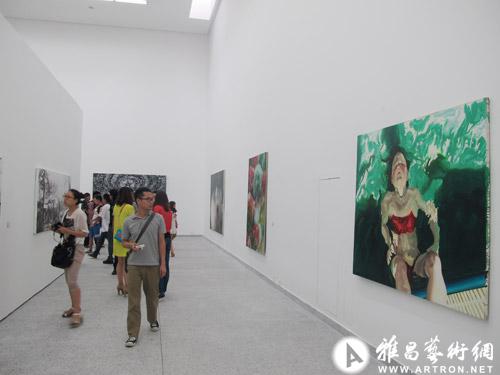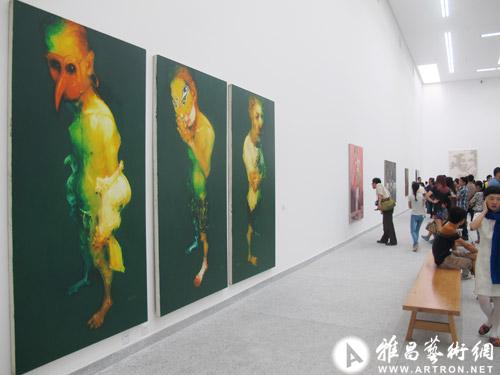
A blindfolded male artist crawls along the ridge of a concrete wall at the edge of a square, oblivious to three contemporary dancers, dressed in colorful long-sleeved T-shirts, who skip and jump with two mentally handicapped children in the middle of the square.
This contrast between the solitude of a modern man and the simple, merry life of artists and children serves to open a new contemporary art museum in the Blue Roof Art District in a rural area of eastern Chengdu, capital of Southwest China's Sichuan province on May 25.
Simplicity is at the heart of the single-block museum, built in an array of concrete, glass, wood and red bricks.
"The materials I use, such as the bricks (on the floor of the square), can all be found in a rural environment," Liu Jiakun, the chief architect of the museum, said at the opening of the museum and the 2013 Chengdu Blue Roof Art Festival from May 25 to June 30. "I designed it for the public," he said.
"Chengdu is exceptional in China in the sense that famous artists (and architects) can have a real influence on public life and urban culture," said Yang Mian, one of the artists who founded the old Blue Roof art center in a deserted warehouse 10 years ago in Chengdu.

"If the city planners have something in mind for our art area, or for the city, they would come to ask what the artists would think of it," said Yang, who teaches at the School of Art and Communication at Southwest Jiaotong University in Chengdu.
Thanks to the influence of outspoken public intellectuals, such as Yang and Liu, Chengdu has managed to integrate economic development and environmental sustainability.
Friendly environment
The focus on environmental issues is a major theme in contemporary art, especially in Chengdu, Antonio Wehrli, 33, an oil painting artist from Zurich, Switzerland, told the Global Times during the opening event.
"It's important to maintain a rural feeling as well … If you only (focus) on the urban areas, you might lose the roots - forget why you're on this road - the old part of nature," said Wehrli, a resident expatriate artist in the art district.

The Swiss artist, who said he is "seeking nature," passed by Chengdu on a Taoist pilgrimage from Wudang Mountains in Hubei Province to Heming Mountain in Sichuan Province in 2011.
He immediately fell in love with the city and decided to stay.
Wehrli now lives in an old farmhouse, where he says he can feel the winter cold but also stay close to his neighbors. He enjoys the relaxed lifestyle, honest people and fresh air found in the rural parts of Chengdu.
"Here everybody knows each other; there is no competition. It's just that everybody creates what he feels like," Wehrli said.
"I think it's important that the heart is free and happy to create good art, and I'm happy here," he noted.
We recommend:
